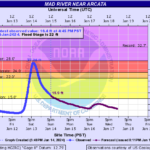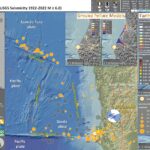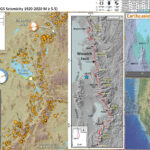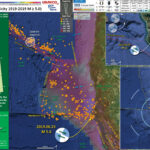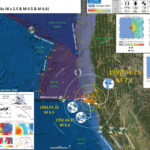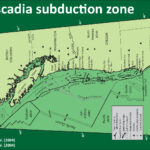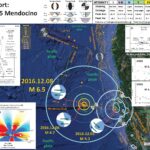Often I feel FOMO (fear of missing out) when I am out of town for work and there is a large storm as I would be missing the opportunity to observe some extreme weather. I was traveling for work in…
Earthquake Report: M 6.4 Gorda plate
Initial Narrative Well, it has been a very busy week. I had gotten back from the American Geophysical Union Fall Meeting in Chicago late Saturday night. I had one day to hang out with my cats before I was to…
Earthquake Report: Mendocino triple junction
Well, it was a big mag 5 day today, two magnitude 5+ earthquakes in the western USA on faults related to the same plate boundary! Crazy, right? The same plate boundary, about 800 miles away from each other, and their…
Earthquake Report: Salt Lake City
As I was waking up this morning, I rolled over to check my social media feed and moments earlier there was a good sized shaker in Salt Lake City, Utah. I immediately thought of my good friend Jennifer G. who…
Earthquake Report: Mendocino triple junction
Well, I was on the road for 1.5 days (work party for the Community Village at the Oregon Country Fair). As I was driving home, there was a magnitude M 5.6 earthquake in coastal northern California. https://earthquake.usgs.gov/earthquakes/eventpage/nc73201181/executive I didn’t realize…
Earthquake Report: Gorda plate!
I was at a workshop to develop a unified strategy for research and monitoring in the Klamath River estuary (led by the Yurok Tribe, Andreas Krauss) yesterday and missed feeling the first of two M 4.6-4.7 earthquakes. I was presenting…
Earthquake Report: 1992.04.25 M 7.2 Petrolia
The 25 April 1992 M 7.1 earthquake was a wake up call for many, like all large magnitude earthquakes are. I have some updated posters as of April 2021 (see below). Here is my personal story. I was driving my…
Earthquake Report: 1700 Cascadia subduction zone 317 year commemoration
Today (possibly tonight at about 9 PM) is the birthday of the last known Cascadia subduction zone (CSZ) earthquake. There is some evidence that there have been more recent CSZ earthquakes (e.g. late 19th century in southern OR / northern…
Earthquake Report: 2016 Summary Cascadia
Here I summarize the seismicity for Cascadia in 2016. I limit this summary to earthquakes with magnitude greater than or equal to M 4.0. I reported on all but five of these earthquakes. I put this together a couple weeks…
Earthquake Report: Mendocino fault Update #1
Today is one of my busiest days of the semester. I am administering a final and my two classes are presenting their video projects. Then, we had this M 6.5 earthquake in the wee hours and a M 7.7 (prelim…

